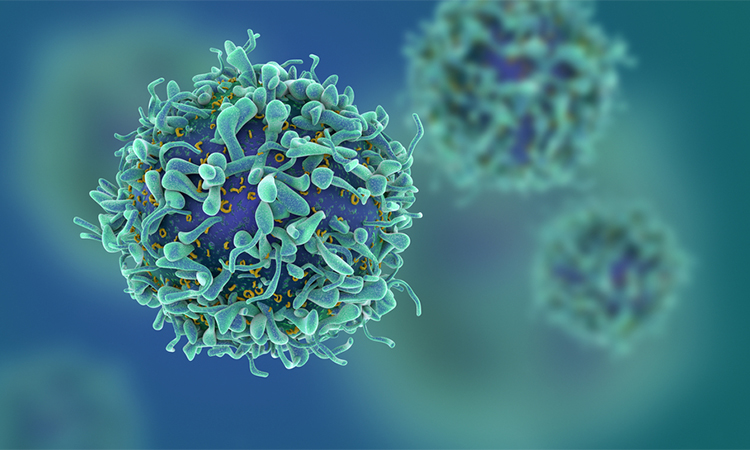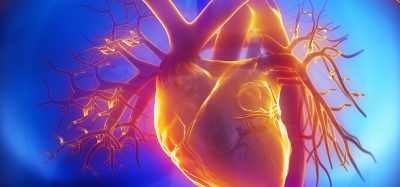Dynamic molecular aggregates within cells
Posted: 21 August 2023 | Drug Target Review | No comments yet
Researchers from the University of Freiburg and the University of Cambridge have observed live cell formation of membraneless molecular aggregates, uncovering the interplay between biological mechanisms and physical force.

Inside cells, a multitude of critical processes occur within membraneless molecular aggregates. These dynamic structures play a pivotal role in ensuring the correct concentration and proximity of molecules necessary for cellular functions. Researchers from the University of Freiburg, Germany’s Cluster of Excellence CIBSS, and the University of Cambridge, UK, have achieved an innovative feat by witnessing and analysing the formation of these condensates in live cells. Their findings, published in Nature Communications, elucidates the fact that this process is guided not solely by physical forces but also by active biological mechanisms. Importantly, they’ve made their experimental methods and analysis tools accessible, democratising research on small aggregates even in less equipped laboratories.
In a hypothetical scenario where molecules are randomly dispersed within a cell, its viability would be compromised. Segmentation into specialised compartments becomes imperative for orchestrating numerous biochemical processes cohesively. While some compartments are membrane-bound, others are not and exist as “membraneless” molecular aggregates, commonly referred to as condensates. These condensates serve vital biological roles due to their adaptable sizes and quantities. The prevalent notion is that they form through a physical phenomenon known as “liquid-liquid phase separation.”
Professor Thorsten Hugel of the CIBSS Cluster of Excellence highlights, “These condensates exert significant control within cells, capable of accelerating or decelerating biochemical processes as needed.” Hugel collaborated on this study alongside Professor Aleks Reinhardt from the University of Cambridge.
Elusive insights from small condensates
The role of condensates in processing biological cues and external stimuli remains an area of limited exploration, as Hugel notes, “Research commonly concentrates on larger, stable condensates due to their tractability. However, these larger formations typically represent the culmination of protracted processes. In many aspects, it’s the small, dynamically growing and receding condensates that hold more intrigue.” The challenge lies in their small size and rapidity, rendering them challenging for high-resolution microscopy within live cells.
Innovative approach overcomes technical barriers
The present study pioneers a solution to surmount these technical hurdles. Researchers from Freiburg and Cambridge innovatively combine high-resolution fluorescence microscopy, specifically high-angle illumination (HILO) microscopy, with a specialised experimental procedure and Artificial intelligence-driven analysis techniques.
Unanticipated halts in growth defy simple models
Comparing their live cell measurements with conventional theoretical models of condensate formation, the researchers stumbled upon unexpected outcomes. Reinhardt remarks, “The results caught us off-guard. The initial growth of the condensates we examined aligns with familiar physical models, as one might predict. Yet, upon reaching a certain size, their growth inexplicably ceases.”
Stress signalling governs NELF aggregate growth
The team concentrated on NELF protein aggregates for their study. These aggregates form during cellular stress, like heat-induced stress or protein aggregations as seen in neurodegenerative disorders. Co-author Dr Ritwick Sawakar explains, “NELF condensates in the cell nucleus effectively suppress gene expression, particularly vital during stress for cellular survival.” Interestingly, the researchers observed small NELF condensates even in non-stressed cells. Reinhardt elaborates, “While non-biological systems might exhibit ongoing growth once a critical size is attained, living cells demonstrate this only under stress conditions.” This suggests that cellular stress triggers controlled maintenance of small NELF condensates until stress signals instigate rapid large-scale growth.
Crucial role of protein aggregates in signal processing
The researchers believe this complex process holds significance for processing stress signals effectively, permitting rapid formation of larger condensates and dissolution of smaller ones when required. This adaptability allows cells to respond promptly to stress, especially pertinent in aging when less efficient stress responses contribute to age-related neurodegenerative diseases.
Protein aggregates are widely believed to serve diverse fundamental functions in cellular signal processing. The innovative method introduced in this study paves the way for a holistic comprehension of these roles. Additionally, it facilitates exploration into the involvement of protein aggregates in misfolding disorders such as dementia, Alzheimer’s, and Huntington’s diseases. Ultimately, an in-depth grasp of these mechanisms could enhance disease diagnosis and therapeutic development in the long run.
Related topics
Small molecule, Small Molecules, Stem Cells, T cells, Targets
Related organisations
University of Cambridge, University of Freiburg
Related people
Dr Ritwick Sawakar, Thorsten Hugel (CIBSS Cluster of Excellence)







